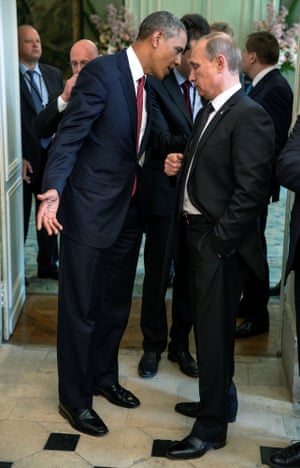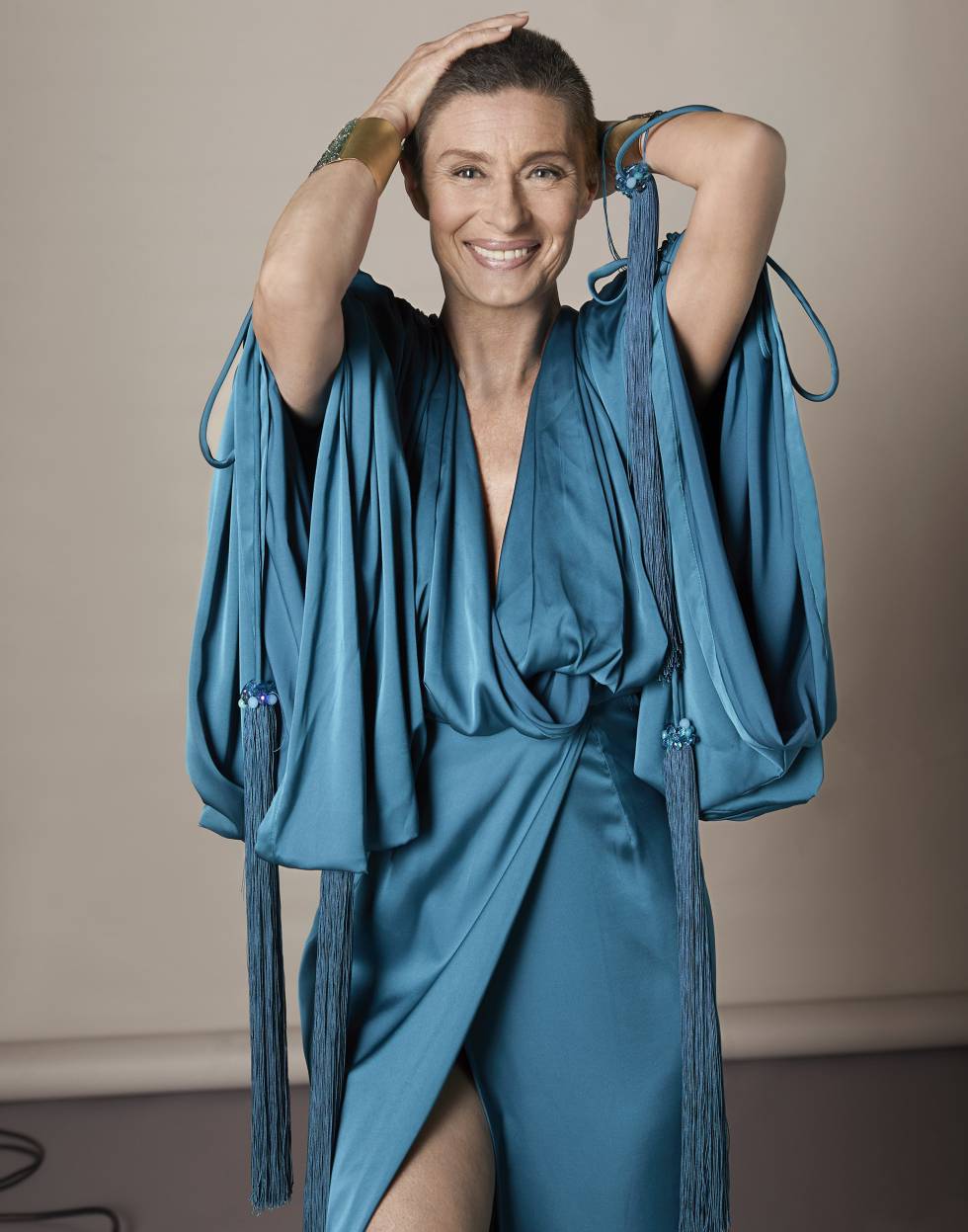Presidents Obama and Putin in Normandy, France, 2014.
I
wasn’t supposed to be here for this picture. It was taken on the 70th anniversary of the Normandy landings – all the heads of state had gathered there and were coming out of an impromptu luncheon. The official photographers from each country had been kicked out – we were all supposed to leave the building. But I have a knack of making myself small and sticking around.
The shot shows the kind of interaction President Obama had with President Putin during his tenure. It was 2014, a particularly tense time between the two countries. You can see in the facial expressions and gestures that this was a very serious conversation. There are interpreters stood behind them, but I get the impression from Putin’s face that he understood exactly what was being said in English.
I was within earshot. I can’t recount specifically what they said, but I knew the subject matter. Can I say what it was? It was about … some of Russia’s actions in the world. Let’s leave it at that.
This conversation went on for a while: they weren’t thinking about me. To them, I was just one of many people in the room, coming and going in different directions. I started out shooting horizontally and tighter, and then switched to vertical, backing up to show their entire bodies. Compositionally, that seemed to show the body language better.
I first met Obama on his very first day in the US senate in 2005. I was impressed by the way he interacted with people, not just on the podium but on a one-to-one level. And from a photographer’s standpoint, I saw right away how comfortable he was in the presence of a camera. I could be in some pretty intimate situations with him and me being there with a camera didn’t seem to bother him at all.
I would tell friends that I was photographing a senator who was going to become the president of the United States. But on other occasions I’d see him deliver these long-winded answers during town hall meetings and wonder if he really had it in him. He was so policy-oriented that he would sometimes give 10- or 15-minute answers when people wanted a quicker response. I sensed he was losing some people, but he got better at that over time.














 Nastasia Urbano poses in a silk dress. FOTOGRAFÍA DE OUTUMURO / ESTILISMO DE FERMÍN Y GILLES
Nastasia Urbano poses in a silk dress. FOTOGRAFÍA DE OUTUMURO / ESTILISMO DE FERMÍN Y GILLES


